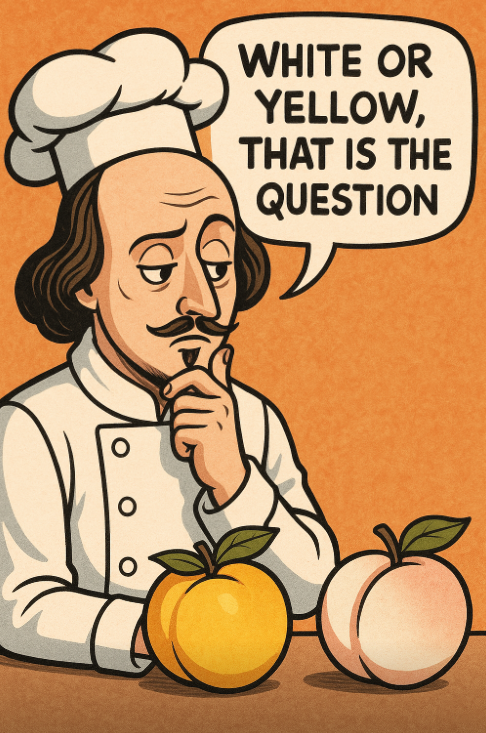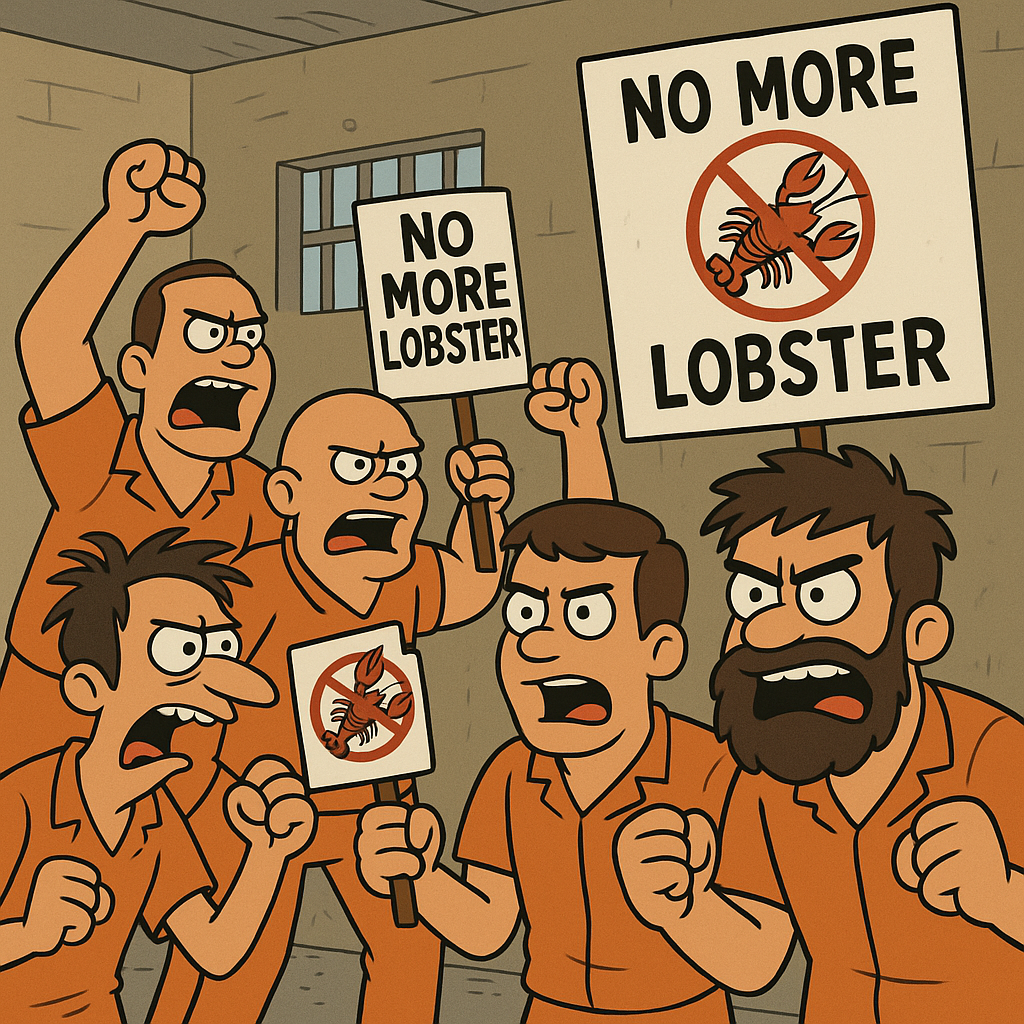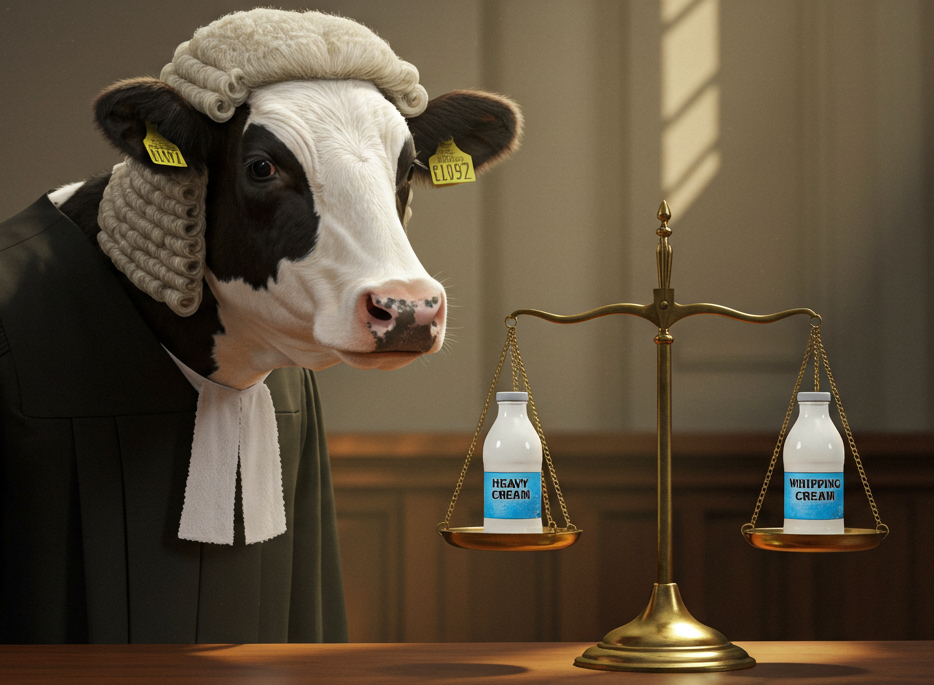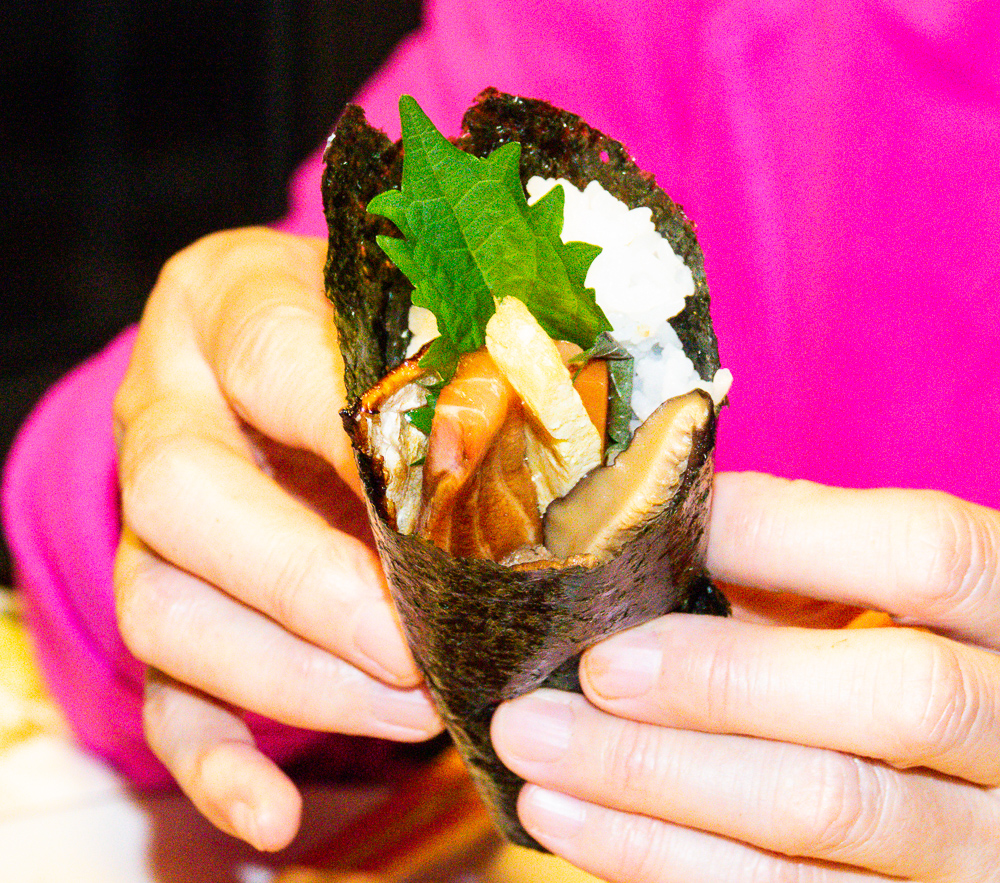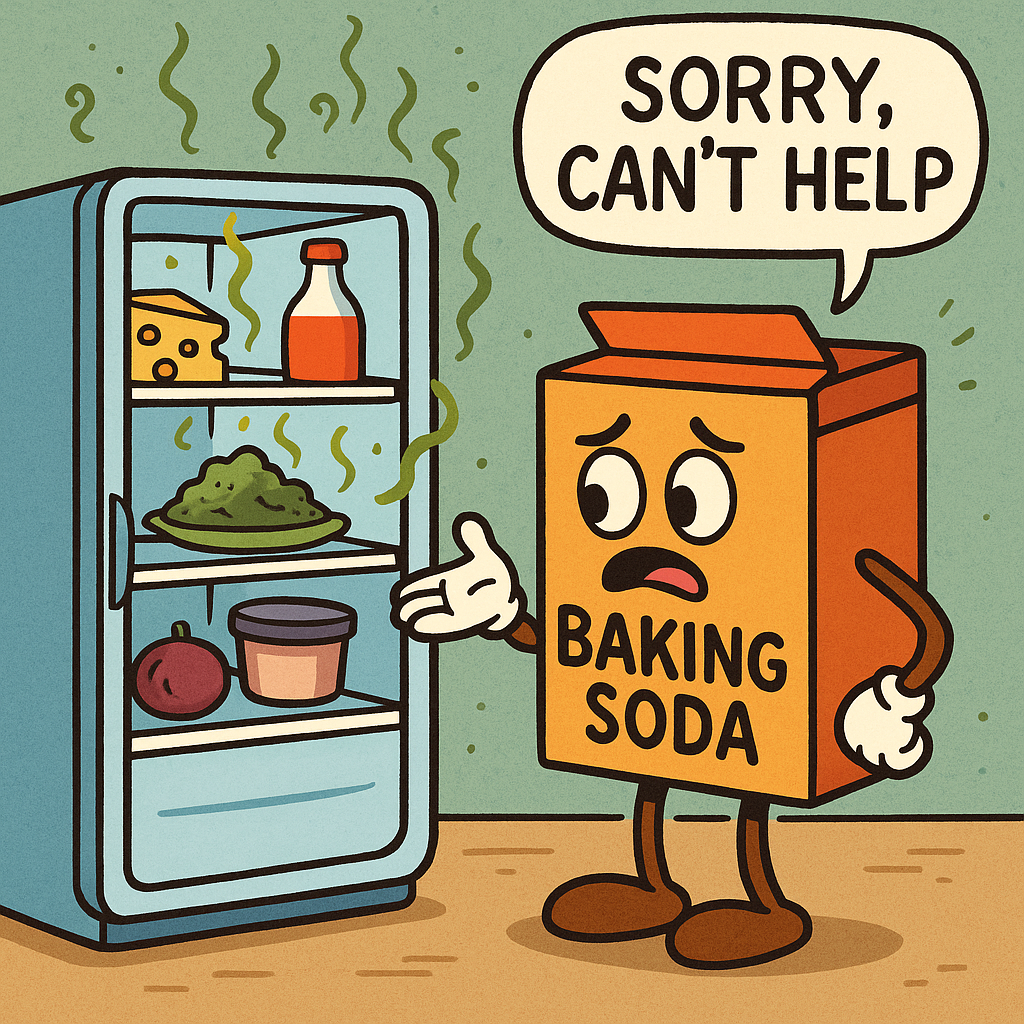Lobster is one of those food that is considered “fancy eating” by many people, and the prices sure bear that out! But it has not always been that way. In the 18th century, lobsters were so plentiful along the Massachusetts coast that they would wash ashore in large piles. They were called “cockroach of the sea” and were considered the “poor man’s chicken.” Looked down on as low class food, lobsters were mainly used as fertilizer, bait, or fed to prisoners and indentured servants. In fact, there’s a story about prisoners rioting over being fed too lobster too often. It’s a nice story, but almost surely yet another myth (see here).
As the American rail transportation system expanded, rail companies realized they could serve lobster to passengers who were unaware of it’s lowly status. It was presented as a decadent luxury item, and creative chefs created new dishes to highlight lobster’s virtues. People liked it and began requesting lobster even away from the dining car.
This shift in perception transformed lobster from a lowly food to a luxurious delicacy. It’s amazing how perspectives can change when economic opportunities arise!
Well the color is different, duh! But what about kitchen uses? Peaches come in yellow and white varieties, and some cooks think they are equivalent when it comes to culinary uses. But nay, this is yet another kitchen myth! There are subtle but important differences between yellow and white peaches.
Yellow peaches have a distinct “peachy” flavor and a hint of tartness that nicely balances their sweetness. The flesh is relatively firm, so they hold up well when baked or canned. White peaches have a more delicate flavor, almost floral in nature, and essentially no tartness. The flesh is softer than yellow peaches and they do not do as well in pies, cobblers, and the like. They are great in jams and syrups. Both kinds are, of course, great when simply eaten out-of-hand.
On a safety note, the lack of tartness, or acidity, in white peaches, means that they cannot safely be canned using the hot water bath method but should be frozen. The acidity of yellow peaches makes them safe for hot water bath canning. Learn more about acidity and safe canning here.
You might think that saffron, with its distinct little threads, would be hard to fake. But where there is money to be made, people are always creative with some new scam! And given the price of saffron, it is wise to be careful. So you may not be surprised that you can find fake and adulterated saffron on the market. How is this done?
Corn silk! Yep, the scoundrels will dye corn silk to look like saffron and mix it with some real saffron. The threads of corn silk look like saffron to the untrained eye. Corn silk has no flavor, of course, so you are being ripped off. In the worst case there is no real saffron included, so in cooking you get no saffron taste at all!
A good way to avoid adulterated/fake saffron is to buy it from a reputable source. You can also test at home:
- Put a few threads in cold water. Genuine saffron will release a rich, golden hue gradually, without losing its vibrant red color. Fake saffron typically bleeds color rapidly and turns pale, indicating the use of artificial dyes.
- Mix a small amount of baking soda in water, then add the saffron threads. Genuine saffron will lead to a yellowish tinge due to the natural coloring agents interacting with baking soda. Fake ones may not cause any significant change or might even turn an unusual color.
You can learn more about saffron here.
Many people think that “sushi” is synonymous with raw fish. Not so – the term actually refers to the vinegared rice that is an essential part of sushi meals. This rice is made by dissolving sugar and maybe a touch of salt in rice vinegar and then tossing this liquid with the hot, just-cooked rice. This rice is used to make the rolls and other items that you typically order at a sushi restaurant.
The term sushi therefore refers to vinegared rice (called shari or sushi-meshi) served with other ingredients. These ingredients may or may not include fish; egg and vegetable are popular, and of course many kinds of sushi include seasoned dried seaweed, or nori. The fish may be raw or cooked; eel and shrimp are always cooked in my experience.
Raw fish served by itself without the rice is called sashimi. Sashimi itself is not sushi, although it is typically available at sushi restaurants.
There are several kinds of sushi, or ways of serving it. Here is a quick run-down:
- Maki sushi: Rice and fillings are rolled into a cylinder inside a sheet of seaweed (nori) and then sliced into bite-size pieces.
- Nigiri sushi: Rice is hand-formed into small oval mounds and topped with sliced fish, egg, etc.
- Te-maki sushi: Hand rolled sushi provides sheets of nori, vinegared rice, and various fillings. Each diner then “hand rolls” the seaweed into a conical shape containing the rice and fillings. It is eaten sort of like an ice cream cone (see photo below).
- Chirashi zushi: A bowl or box of vinegared rice scattered with a variety of toppings such as raw fish, vegetables, and egg.
- Oshi sushi: Rice and other ingredients are pressed into a mold and then cut into blocks or rectangles.
- Inari sushi: Vinegared rice stuffed into pockets of seasoned fried tofu.
Te-maki sushi
I shudder to think of the thousands of tons of baking soda that have been wasted because of this myth. This was a very successful marketing ploy by you-know-who!
But let me back up for a moment. From a chemical point of view, baking soda can in fact neutralize some odors that might be found in your fridge. It works with some odors, such as rancid butter, fish, and decaying meat, but not on others (garlic, onion, mold and mildew). The problem is getting the odor to the baking soda.
Folks will just put an opened box of baking soda in the fridge. At best they will remove the entire lid. The odors will at best contact the top surface of the baking soda, which soon gets “used up.” The rest of the box is wasted and does you no good.
For baking soda to be effective at all you would have to spread it out in a thin layer on a large plate. But that’s a spill waiting to happen, and who has the space in their fridge?
Activated charcoal pellets are much better at absorbing odors than baking soda, but it is sort of pricey and again must be spread out in the fridge so that the odors can get to it, making it impractical for most people.
Bottom line? The only really effective way to prevent food odors in your fridge is to wrap smelly food, throw out stale stuff, and clean the fridge now and then. But you knew that all along, right?
You hear this on a regular basis, often from Texans. The fact is that many delicious traditional (and non-traditional) chilis are made with beans and/or tomatoes. There is in fact some basis for this myth. Traditional Texas-style chili is made with meat but without beans or tomatoes, and it can be great, but that’s just one regional variant.
What about “Cincinnati” chili? I used to think it was meant as a variant on southwestern chili, and a very poor one at that. I since learned that Cincinnati chili is actually a dish invented by Greek immigrants in Cincinnati and meant as a spaghetti sauce or hot dog topping. It has some chili powder in it, but the main flavor comes from traditional Mediterranean spices such as cinnamon, nutmeg, cloves, and cinnamon. Learn more about Cincinnati Chili here.
Nein, mein Herr! Or in English, no sir! Liverwurst and braunschweiger are two traditional German liver sausages, and it is understandable that non-afficionados would not be aware of the differences. And in the United States there are few real fans, although I am most definitely one!
Well, the name certainly sounds like it came from Switzerland! But no, the name comes from the process used to tenderize the steak by pounding or rolling it, which is called swissing. The meat – a tough cut, typically round or chuck steak–is then floured and pan fried followed by simmering in a tomato/onion sauce until tender.
Additional reading: Recipe for Swiss steak




